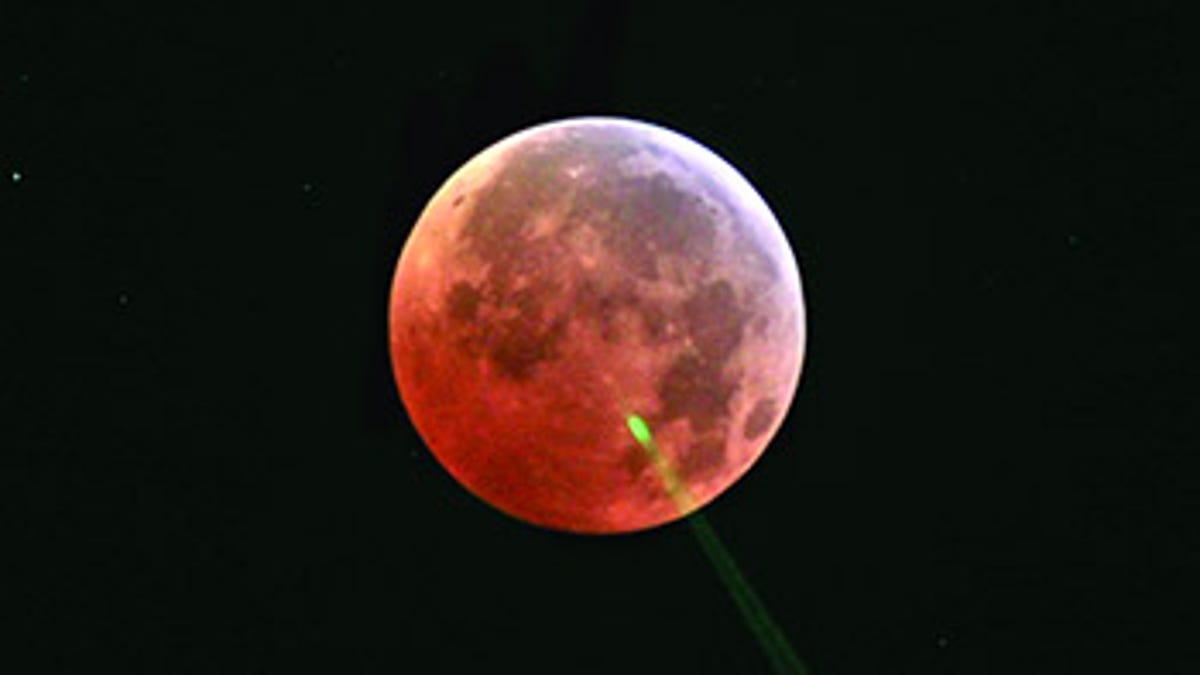Full-moon curse lifted? Looks like dusty mirrors are to blame
Researchers explain why reflectors left on the moon 40 years ago aren't cooperating when it comes to returning laser beams meant to measure the orb's distance from Earth.

The moon has been worshipped as a god and hailed as a fertility booster, but it's also been credited with driving people insane, and, of course, gotten a bad rap for all those pesky werewolf conversions. So it's only natural that when scientists started observing a strange phenomenon related to the moon, they named it the "full moon curse."
This curse doesn't involve fangs or fertility, however. It has to do with measurements scientists have been taking of the moon's distance from Earth.
Tom Murphy, a physicist at UC San Diego, and his cohorts have been doing their measuring for some time by bouncing laser beams from Earth off reflectors that have been left on the lunar surface by several Apollo missions, as well as those attached to a Russian lunar rover named Lunokhod, which was left up there in the early 1970s. The reflectors are known as "corner cube prisms."
To get an idea of what these prisms look like, just glance at the corner of a room where the walls meet the ceiling. That type of three-surface array bounces light around in such a way that it returns directly from whence it came (think about the way a racquetball shoots back at you when it hits a corner). So by measuring the time it takes for the beam to return to its source, scientists are able to calculate the moon's distance down to about a millimeter.
One discovery from this research, known as lunar ranging, is that the moon is actually getting farther and farther away from Earth. But that's not what the full-moon curse is all about. What astronomers have noted is that on full-moon nights, the amount of light that was bouncing back to them was significantly less than what they were sending up. Murphy thinks he has solved the issue, and just published his findings in the scientific journal Icarus.
To understand his solution, it's necessary to understand the work he does at the project he works on -- the Apache Point Observatory Lunar Laser-ranging Operation (Apollo). From that observatory's location in southern New Mexico, Murphy and his team send laser pulses containing 100 quadrillion photons to the moon. Of those, on a normal night, sometimes only one photon returns. The others can get knocked off course by the Earth's atmosphere on their way up to the reflectors, so that they miss their targets.
On a full-moon night, the laser beams' performance drops to just 1 percent of what the scientists would predict -- creating the dreaded full-moon curse.
Murphy has postulated that part of the reason the laser beams are so weak when they return to the Earth is that the surfaces of the reflectors have become coated with lunar dust. But that doesn't explain why the results are even worse on full-moon nights.
Murphy theorized that on full-moon nights, the sun is able to shoot directly into the tubes containing the prisms and heat up the dust that coats them. This alters the refractive index of the prisms and warps the way the light gets returned to Earth.
To test his idea, Murphy waited for a lunar eclipse to block the sun and cool the prisms. Sure enough, once the Earth got in between the moon and the sun, the performance of the reflectors increased by a factor of 10, equaling the results on non-full-moon nights. This is the research he details in Icarus.
Murphy estimates that over the past roughly 40 years that the reflectors have been on the moon, about 50 percent of their surface has been covered by dust. So clearly, a Lunar Housekeeping Mission needs to be planned. Any volunteers?

